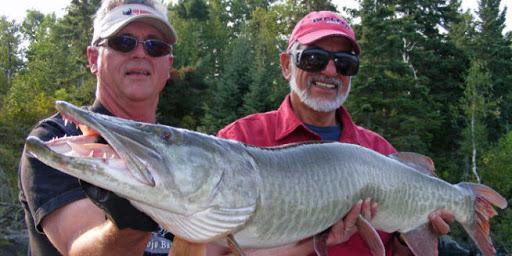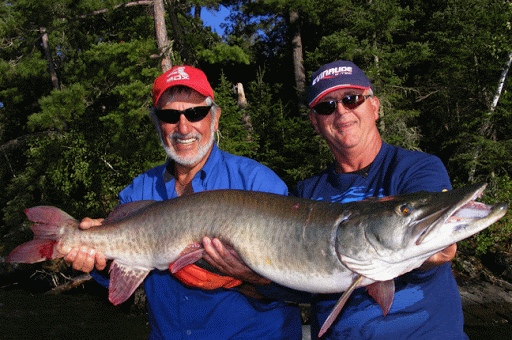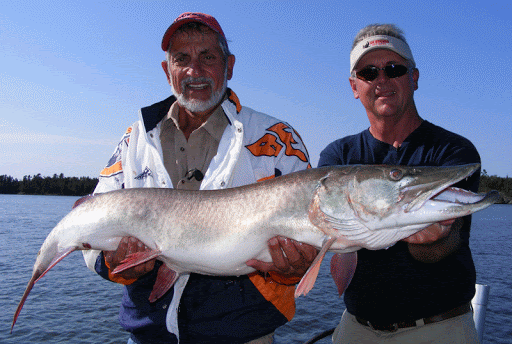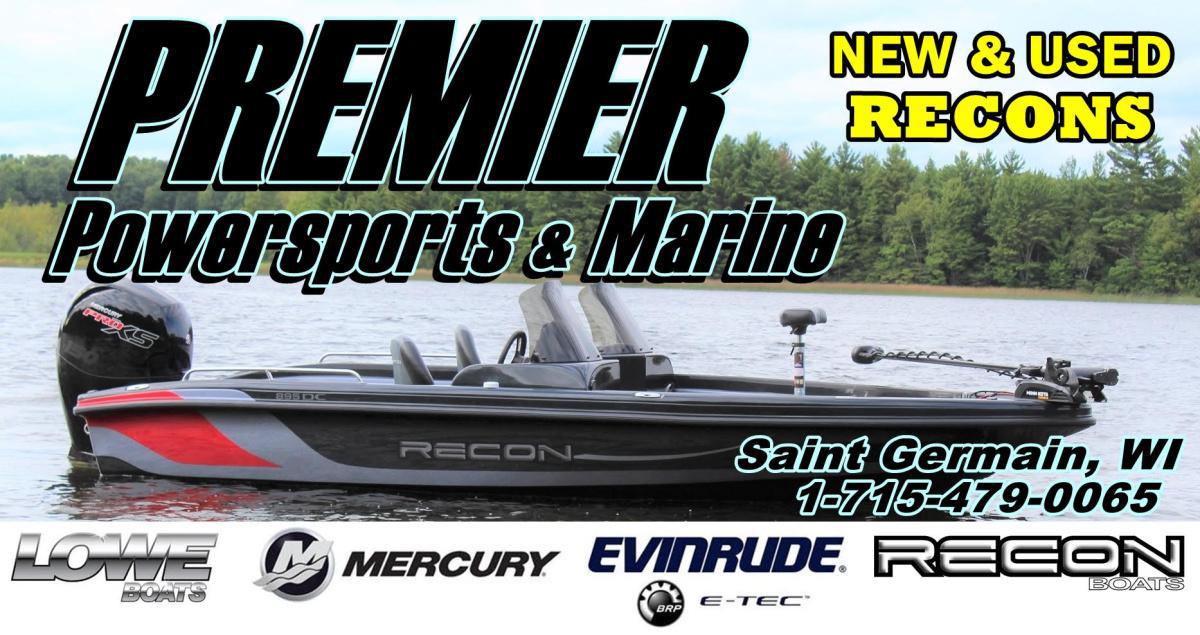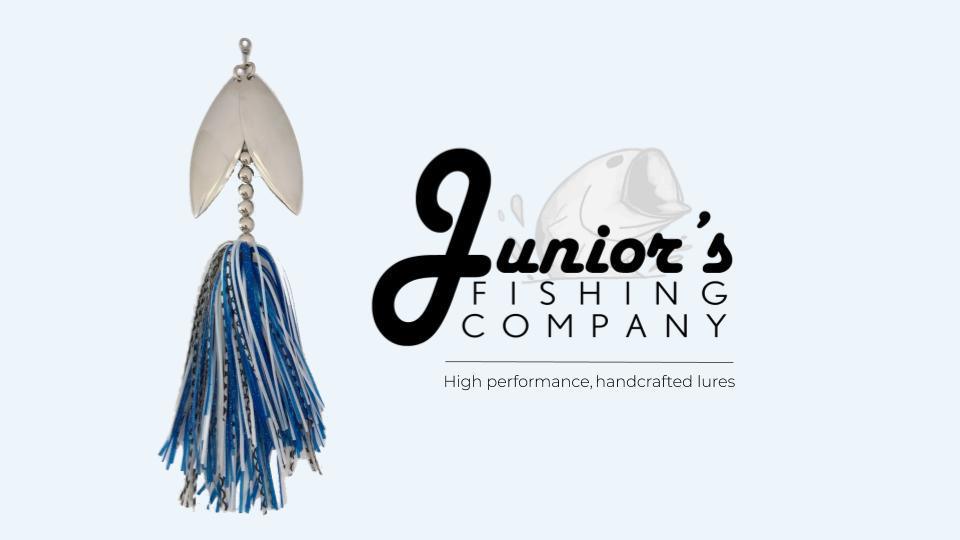I was about as excited as a 12-year old on “opening day”. I hadn’t caught a musky in almost 7 months, and here I was on an amazing lake during a prime time period. I’ve been getting mentally and physically ready for several weeks. I had plan A, B and C ingrained in my head. It wasn’t a matter of if I was going to catch a big one, it was how many of them will be boated. To say I was cranked up would be an understatement.
It was about a ten minute run to one of my favorite spots, a small cluster of islands just off the main lake basin. This honey hole had several rock extensions, narrow cuts between large rocks that generally created current, and several small patches of cabbage. It was perfect…except for one thing; another boat was on it when I rounded the corner. O well, it was on to the next spot which was a fairly short run away. As I neared the next hot-spot I saw it too was being fished. Out of the first eight spots I had plotted out on my “milk run,” five had boats on them or had recently been fished (indicated by fresh bubbles on the surface).
A new game plan began to form. I thought about some of my trolling success. A lot of times I would troll a good-looking shoreline without any outstanding features and catch muskies. Maybe there was a small flat or a short point, or another almost non-descript feature, or just a nice rocky bank bordering some deeper water that muskies were traveling along as they hunt for food or are just changing locations. Whatever the draw was, it held muskies, and received very little pressure compared to the other more recognizable spots. With all the intelligent fishing pressure our top musky waters are now getting, some thinking outside the box is more important now than ever. This became a big part of my new musky game plan…finding some good-looking shorelines and fishing them.
Shorelines With Character
Obviously, shorelines ring the hold body of water, so how do you zero in on the better ones? The best way to describe a good bank is one with “stuff” along its edge. Stuff relates to character. Examples of character could be boulder or chunk-rock shores that are adjacent to deeper water. These same banks may have addition musky attracting features (note figure 1) such as a short rocky point, small sandy bay, reed or frag extension, small bay with cabbage in the back, fallen tree or trees that provide some shade, and maybe a visible boulder or two that’s a few yards out from the bank. On every one of these examples I have caught big muskies. You might have 100-yards of shore that looks good, or it might be a block or more long. As long as some character exists, just keep fishing it. In time you will probably uncover several areas that are better than others, but you have got to fish all of it to find those hotter areas.
Having confidence in a spot or area is a big part of success. If you are having a slow day and decide to try these shorelines I’m talking about, don’t expect miracles. If action is below average in all your favorite spots, good shorelines may also be slow. I’m not saying not to fish them on a calm sunny day, but fish them to learn the contours and what’s around the various points and cuts. Then when the weather improves you are not going in “blind” and screwing up a spot. Another good tip when fishing these banks under less than favorable conditions is to use lures that tend to get follows. Burning a double 10 under bright post-frontal conditions might not tempt a musky to follow, but a Bull Dog, Medusa, or Red October tube worked slow and erratic will often stir up the interest of a big musky. Just having a slow follow or two, gives the muskies location away, cements a spot on your next milk run in that general area, and helps to establish a pattern.
What condition do I like best for fishing these shorelines? It’s an easy answer…wind. That seems to be the best turn-on for these runs, followed by low light conditions. A light to moderate wind under reduced light penetration conditions is about as good as it gets. The wind can be in an almost 160-degree angle. It can be blowing perpendicular to the edge or more parallel. If it is a strong wind blowing right into the bank making boat control tough, you have three options. Wait till dusk when the winds generally die down, troll the bank, or fish it first thing in the morning before the winds generally kick up.
More than likely, I’d make a trolling pass or two if the wind is blasting straight into one of my more productive banks. Even if a bank is several hundreds of yards long, it would only take a couple of minutes to check it out. You won’t see any followers, and probably will miss a small holding area or two, but if there is a hot fish working the stretch, you have an excellent chance of catching it. If you decide to troll an unfamiliar wind-blasted bank, make two trolling passes. When trolling these rock-studded shorelines, there are often“rock surprises” that suddenly pop up. If you have a boat with a steering wheel and are running a graph to read the bottom, by the time your graph recorder draws you a picture of a shallow rock hazard it will probably be too late. The best set up for boat control would be using a tiller operated motor and a flasher type sonar that will give you a more immediate reading of what is below. If you decide to troll a windy bank you aren’t familiar with, make two trolling passes. The first one should be a little deeper off the edge, and the second one shallower and tighter to the structure.
When trolling in the 5 to 8-foot range, a Shallow Invader would be my lure of choice. When trolling it in clearer water conditions, I often go so fast that the lure almost jumps out of the water and darts side to side, but with strong winds, a slower presentation is in order because of the stirred up water and reduced light penetration. On my deeper trolling run of 8 to almost 20-feet, I’d usually be pulling a Depth Raider, Grandma or Jake.
During our musky school on Lake of the Woods each year I am usually paired with an angler or two that is “boat control challenged”. By standing next to them and saying you are going too slow or too fast, or explaining that we should be closer or farther from the bank based on the taper from the shore, nothing helps better that a straight shoreline for those still trying to master their boat control skills, or are getting use to a new electric motor set-up.
Musky Catching Strategies
Generally I like to fish a shoreline going against the wind, unless it’s really howling. By going against the wind you can easily hold a position when more casts are needed to efficiently fish a spot such as a point, weed patch or fallen tree. Fishing with a tail wind, you can easily blow past the spot without making that accurate cast that will lure the musky out of its hide. Also, a good strike-provoking figure 8 will be harder to execute under these conditions.
My arsenal of lures for fishing the bank will generally consist of bucktails, crankbaits/minnow baits, top waters, and a soft plastic toss back for following fish. When going down a straight edge a combination of bucktail (lead lure) and crankbait (second presentation), would be a good combination to toss at them. If the fish are active, the bucktail will be hard to beat. But if the muskies are more neutral, the slower fished deeper-running crankbait might stir up more fish.
Going from left to right on figure 1, the first spot on a spot that needs a few extra casts is a rocky point. Fish will often switch positions from an adjacent bay to a nearby point. If the fish are active, a few casts with a double 10 might be the best approach. If they are more neutral, down-size the blade size and go with a little less flash on the blade. Shiny blades can be easily toned down with a black Sharpie Magic Marker.
I’ve seen several specific crankbait retrieves work around less active muskies holding on the rocks. One called “the Purr” was shown to me by my good friend Joe Bucher. This presentation features a 7-inch Jointed Shallow Raider. After the cast is made the lure is moved with a gentle sweep of the rod. Move the rod back to its original position as you quickly pick up the slack, and execute another sweep. Repeat the process. A “bucktail type” rod with a little flex in the tip works best with this retrieve. The other retrieve is a crash and pause, bouncing the lure off the rocks, followed by a pause that lets the lure rise up a bit. Straight bodied Shallow Raiders, Shallow Invaders, Jakes, and Grandma’s are favorite lures for this tactic. There can be many variations to this retrieve.
The biggest average size muskies I’ve seen have come out of featureless sandy bays. I don’t know what the attraction is, I just know the muskies lay on the sand under calm, warm conditions, and these spots should be checked on a regular basis. I actually have a “sandy bay” map that only shows sandy bays on several of my favorite big musky lakes. Quietly enter the bay and make a few long bomb casts that almost make it to the shore. If you raise a fish don’t expect to come back at last light and catch it because it probably moved out, but it may be on an adjacent structure. Bucktails and top waters work best, but I may come back tossing a soft plastic lure if I have the fishes location pin-pointed
Anytime you see reeds (or frags) out from a shoreline a flat is coming out. The best situation is that some boulders or cabbage exist right outside the reeds and deeper water is adjacent. The bucktail/crankbait approach works fine here unless you have to penetrate the reeds or come through a cabbage patch just outside of it. Under this condition a Bucher Mag Slop Master would be my lure of choice. Just stop it just before it hits the water and keep it coming through the reeds and over the cabbage.
The next bay has a bed of cabbage in the back, and it may only be the size of a car hood and still hold a monster. Unlike the other sandy bay, this one may harbor a musky if the wind is blowing into it. A double 10-bladed bucktail would be my first lure of choice. It’s important to cast over the weed bed and have the blades spinning before it reaches the vegetation. A musky might be along the inside edge, plus this approach helps the big churning blades push the cabbage aside as it comes through the vegetation. A slower approach that may be needed to root one out of the weeds is to fish it slowly with a buoyant, square-lipped crankbait slowly twitched through the cover. Nothing works better that a 9-inch Shallow Raider.
The next spot where a specific presentation works well is around a fallen tree(s). The more complex the wood the more accurate your presentation must be. You want a lure that can be cast to a specific area, one that can be fished in place to get a muskies attention, and one that can still interest a fish as you reel it in fast for the next cast. You can’t keep a bucktail in contact with the tree for long, and top waters aren’t very good when retrieved fast back to the boat. Your absolute best option is a thinner, rounded type minnow bait. Flat sided crankbaits tend to glide off course and are hard to make super accurate casts with. For the ultimate in accuracy, a rod with a little flex in the tip and a plastic minnow bait are the best. If you can get away with a cast sailing a foot or two off course, just about any favorite crankbait will work. After you make the cast twitch the lure in place to get the muskies attention before starting the retrieve.
A boulder or two sticking out from shore is a sign that a flat (usually bouldered) exists. The shallower the flat the more likely it would only be used under low light or windy conditions, where my choice of lures would be a bucktail or top water. During the day, bucktail and crankbait would be the lures of choice.
There is almost always a way to stay ahead of the crowd. In recent years searching out shorelines with character and fishing them under the best conditions with best presentations has been my top go to method. It will work for you too!
Spence Petros



